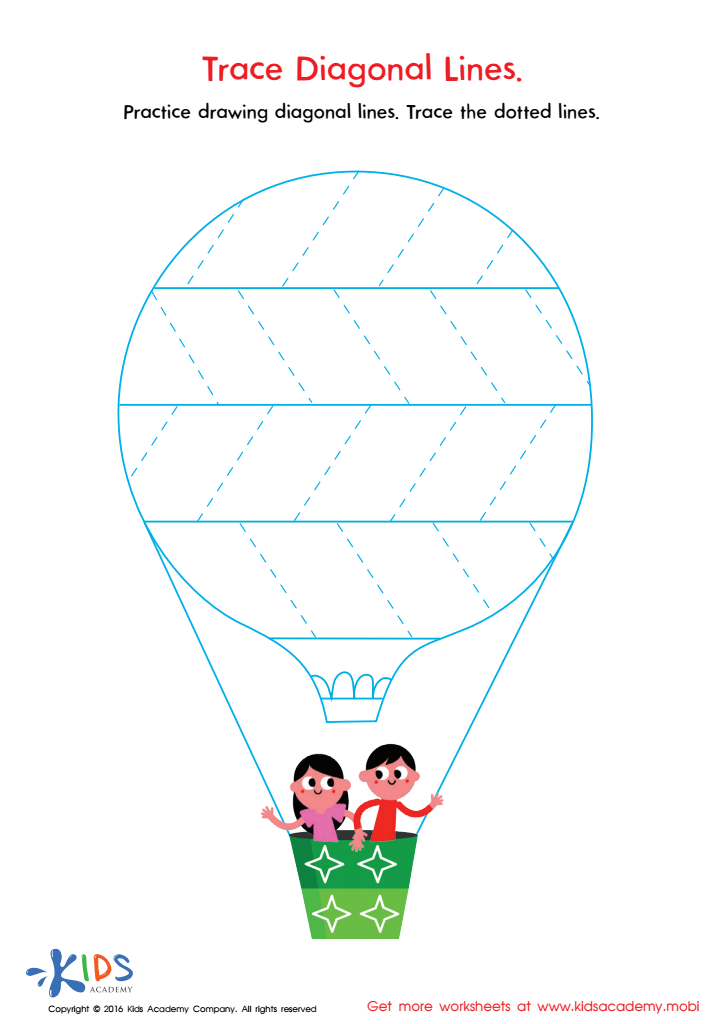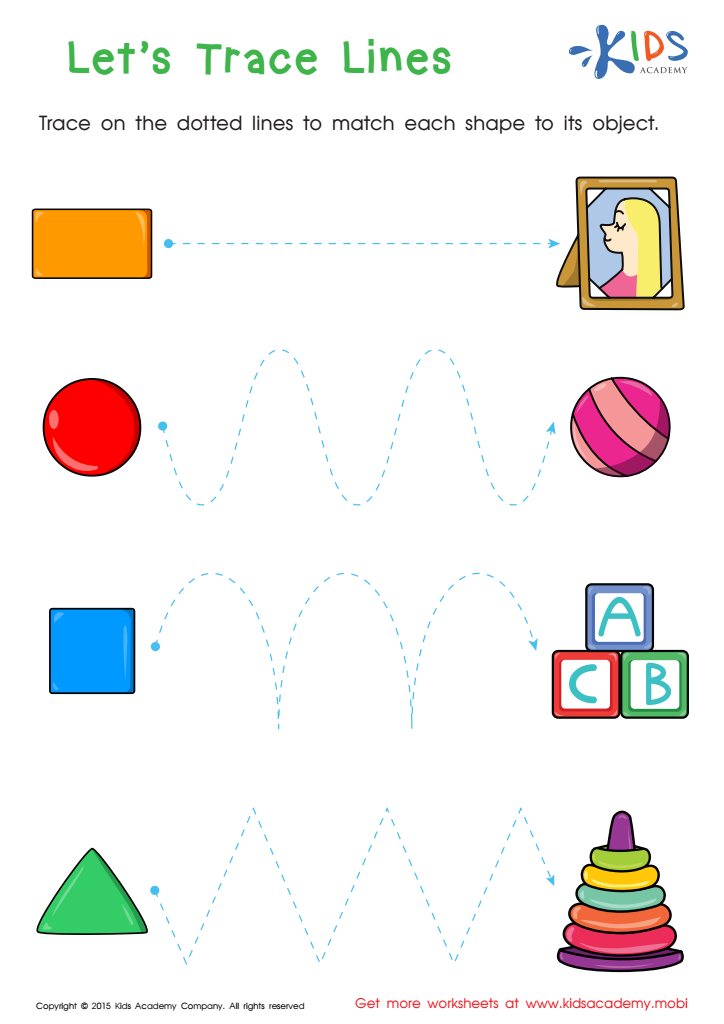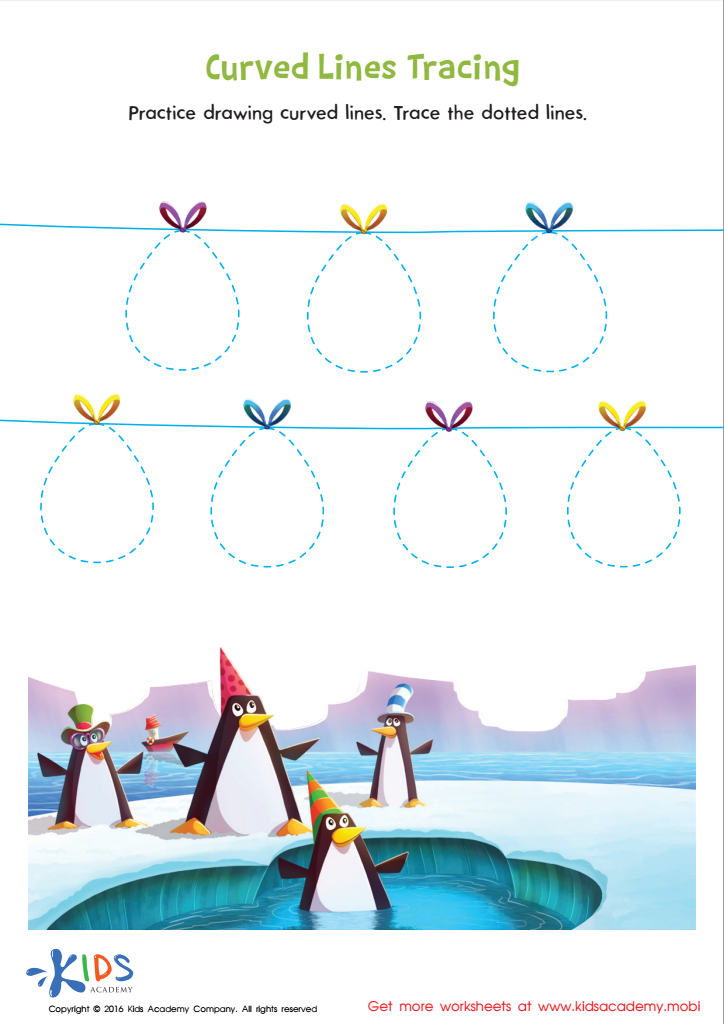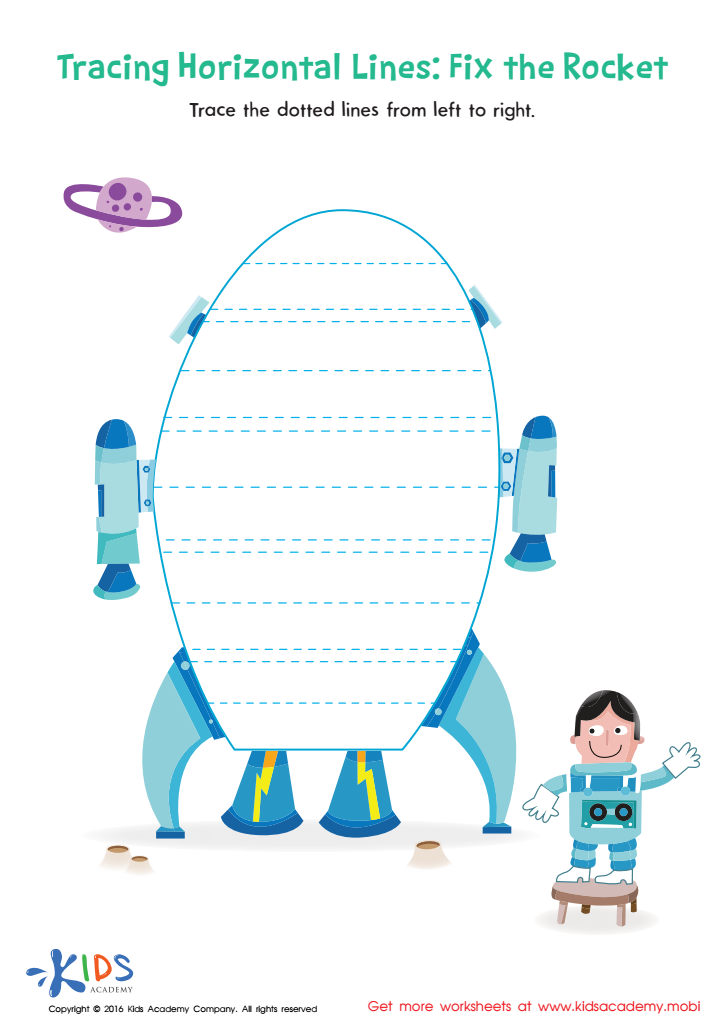Hand-eye Coordination Normal Tracing Lines and Curves Worksheets for Ages 4-6
4 filtered results
-
From - To
Boost your child's hand-eye coordination with our engaging Tracing Lines and Curves Worksheets, exclusively designed for ages 4-6. These activities are perfect for developing fine motor skills and spatial awareness. Each worksheet provides fun, age-appropriate exercises that guide young learners through tracing a variety of lines and curves, essential for handwriting readiness. With vibrant visuals and simple instructions, these worksheets not only enhance coordination but also keep kids entertained. Give your child the tools they need to excel in writing and more with our expertly crafted printables. Download now to support learning through play!


Trace Diagonal Lines Worksheet


First Words: Let's Trace Lines Worksheet


Curved Lines Tracing Worksheet


Tracing Horizontal Lines Worksheet
Hand-eye coordination is a fundamental skill that integrates visual input with motor actions, vital for a child’s development, especially between ages 4-6. Parents and teachers should emphasize normal tracing lines and curves because this practice nurtures essential developmental areas. First, mastering this skill enhances fine motor control, necessary for tasks like writing, cutting, and buttoning clothes. Strong fine motor skills make everyday activities easier and build self-confidence in young learners.
Secondly, tracing activities bolster visual-motor integration, a key aspect affecting a child’s ability to transfer visual information into precise physical actions. This trait is pivotal in academic settings, aiding in the accurate copying of text and shapes, and facilitating the learning of mathematics and geometry.
Additionally, tasks involving tracing lines and curves improve attention to detail and concentration, as children must focus on completing the patterns accurately. This habit of focusing can permeate other aspects of their learning and personal activities, promoting better attention spans.
Lastly, engaging in such exercises can stimulate cognitive development by enhancing problem-solving skills and spatial awareness. This foundational readiness translates directly to smoother transitions into primary school education and daily life competencies, making the importance of hand-eye coordination not just an academic imperative but a holistic developmental necessity.
 Assign to My Students
Assign to My Students
















